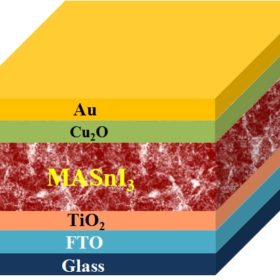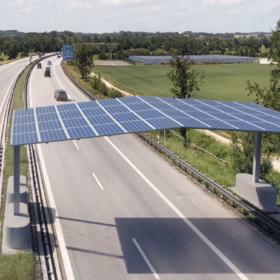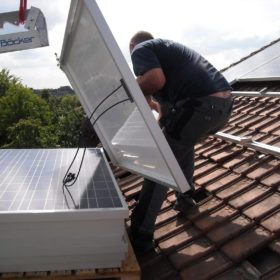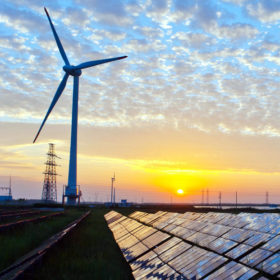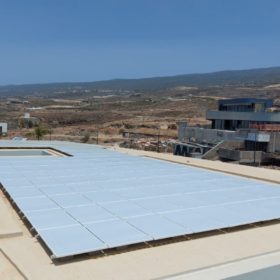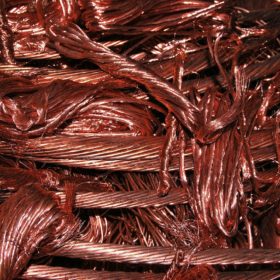Adhesive mounting system for any kind of solar modules
The system, developed by Spanish specialist Alusín Solar, is being tested by Endesa in a 9.8 MW project for self-consumption. The mounting structure is made with aluminum bars that, instead of being fixed to the roof with screws, are attached through a double-sided adhesive.
Lead-free perovskite solar cell with potential efficiency of 27.4%
Scientists in India have simulated a perovskite cell based on methylammonium tin iodide which they claim may achieve a short circuit current density of 25.97 mA per square centimeter, an open-circuit voltage of 1.203 V, and a fill factor of 87.79%. The cell is composed of a fluorine-doped tin oxide (FTO) substrate, a titanium oxide layer, a methylammonium tin iodide perovskite film, a copper oxide hole transport layer (HTL), and a layer made of gold (Au).
Photovoltaic roof for highways
Researchers from Germany and Austria are testing how photovoltaic roofs may be deployed along highways. The first pilot project is planned to be implemented starting from the autumn.
Solar 101: How to evaluate solar contractors for rooftop projects
A well-designed rooftop solar system should last 20 or 30 years, or longer. This guide for choosing the right contractor should help ease your concerns.
Simple trick to protect PV systems from pigeons
A German PV system owner has developed a simple solution intended at preventing the birds from nesting under the modules.
Panasonic launches 380 W heterojunction solar module compatible with its Evervolt battery
The new module series has a power output ranging from 370 to 380 W, a temperature coefficient of -0.26% per degree Celsius, and an efficiency of up to 21.7%.
ISA, MNRE, and World Bank conduct inception workshop for ‘One Sun One World One Grid’ program
‘One Sun One World One Grid’ is a global supergrid project proposed by India for seamless sharing of renewable energy resources among countries. The inception workshop was attended by more than 160 experts and discussed the roadmap of the project.
The panel in white
Slovenian solar module manufacturer Bisol has developed a white panel with a power output of 190 W. The product is claimed to be an ideal solution for seamlessly blending with large surface buildings and maintaining their historic character.
IEA highlights solar’s dependence on Chinese copper processing
The sheer volume of new power lines which will be required to accommodate the rising tide of solar installations ensures copper has been included by the International Energy Agency on its list of minerals which must keep flowing if the energy transition is to stay on course. And it’s not production that’s the potential bottleneck.
Water-free, portable cleaning bot for rooftop solar
India’s Aegeus Technologies has developed an autonomous, water-free cleaning bot for rooftop solar installations. The bot weighs 5 kg (with battery) and can be operated remotely through a web-based app. It uses an air wash technology to clean the panels, ensuring no need for water or any harmful chemicals.

